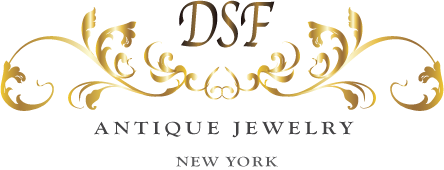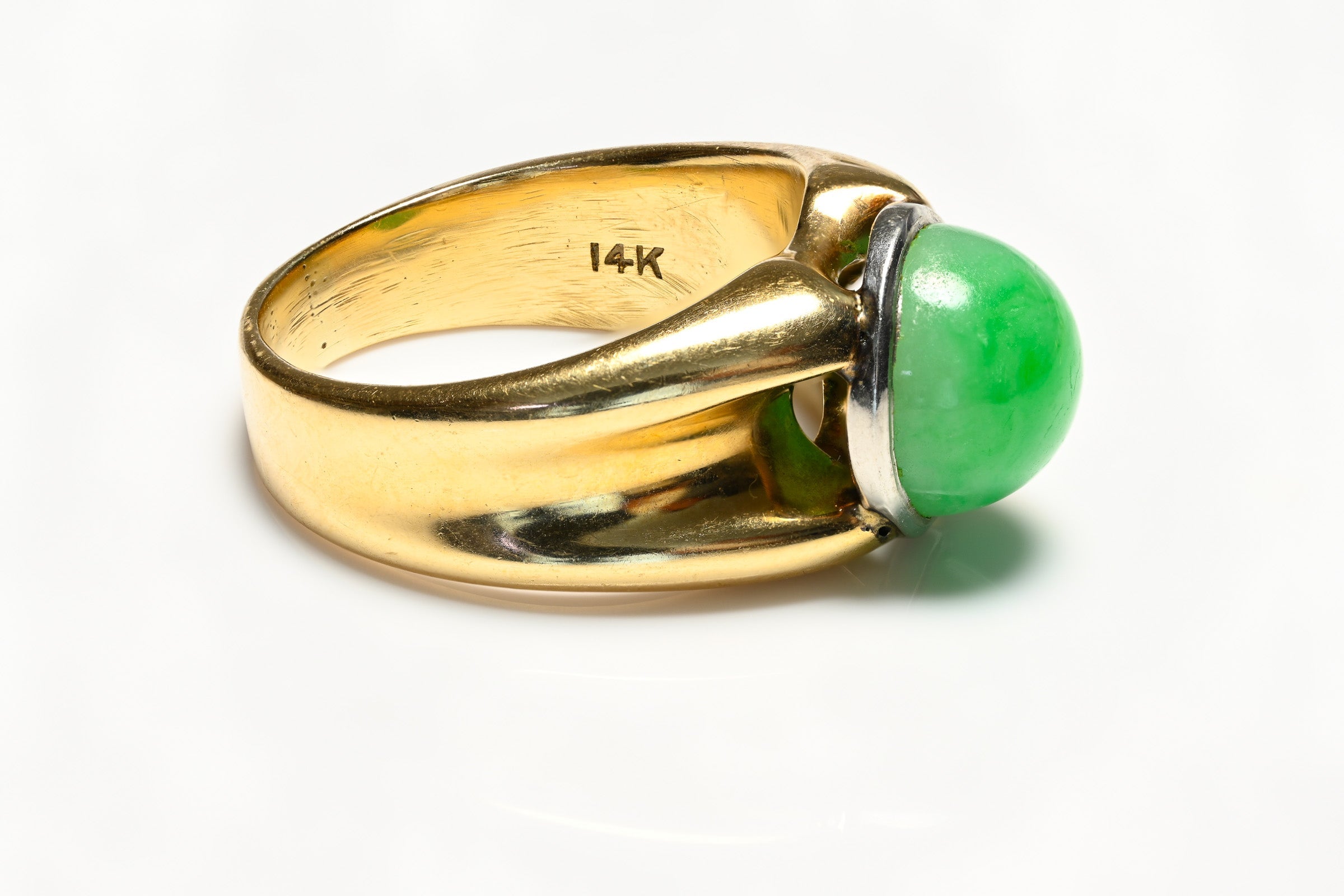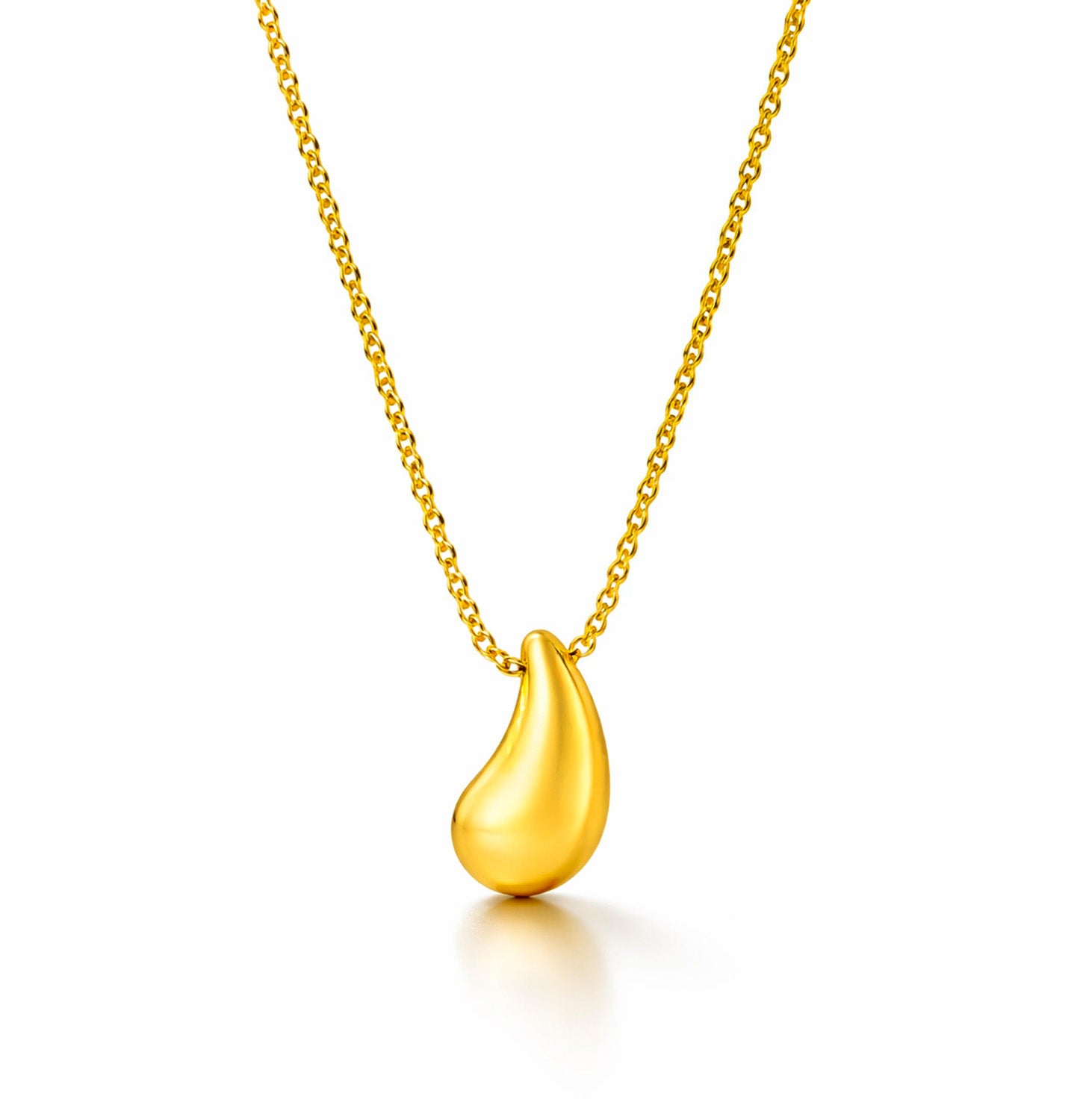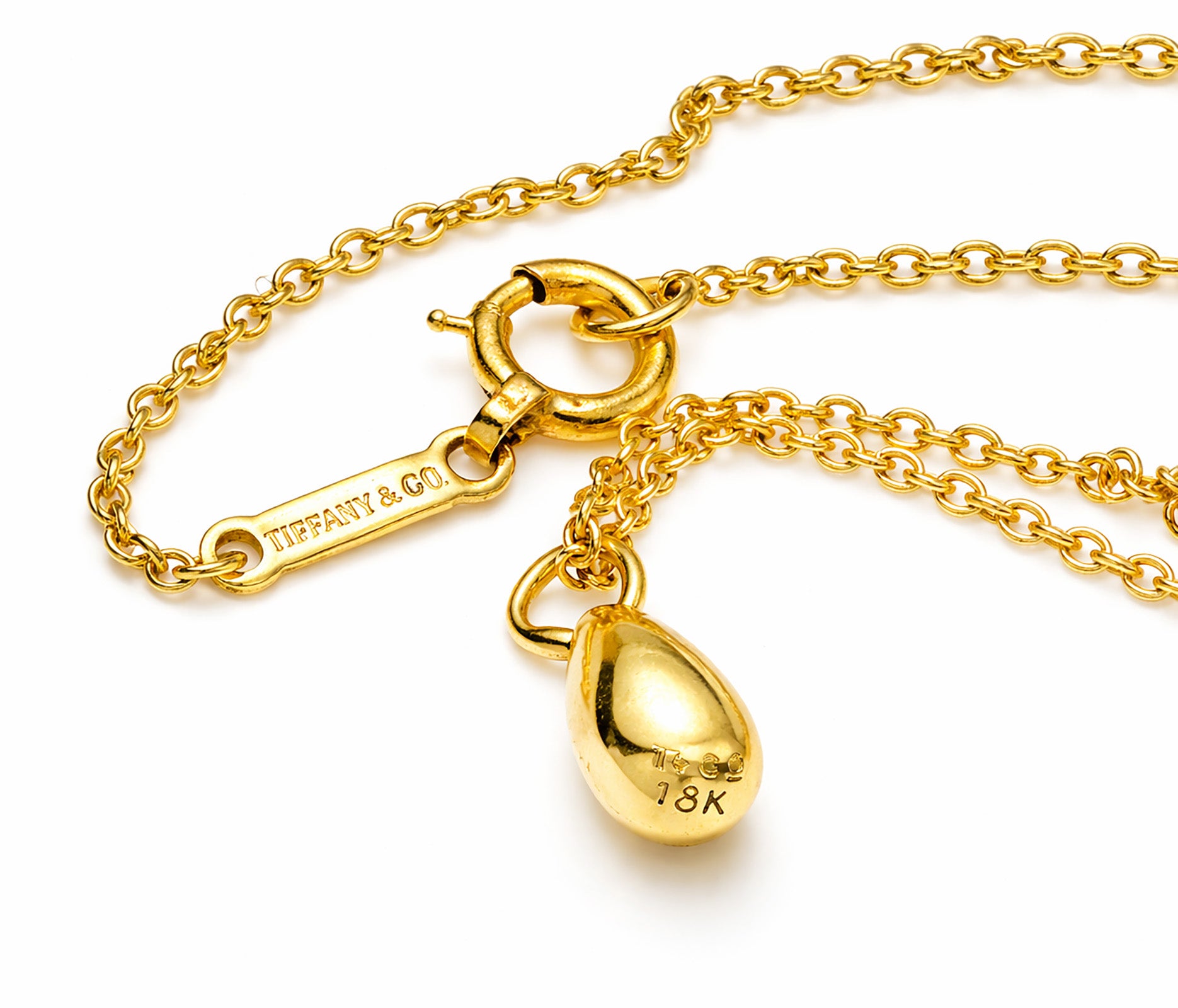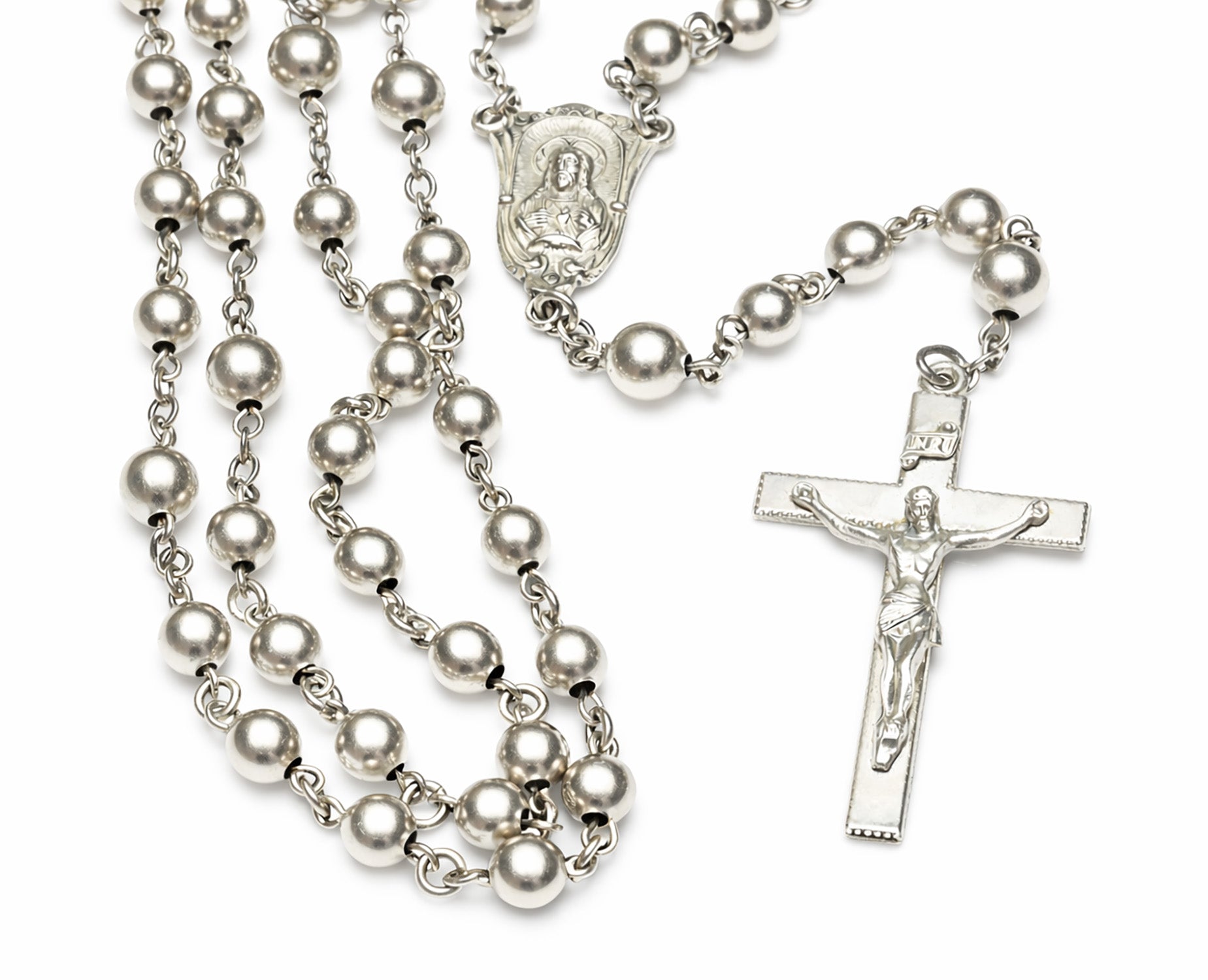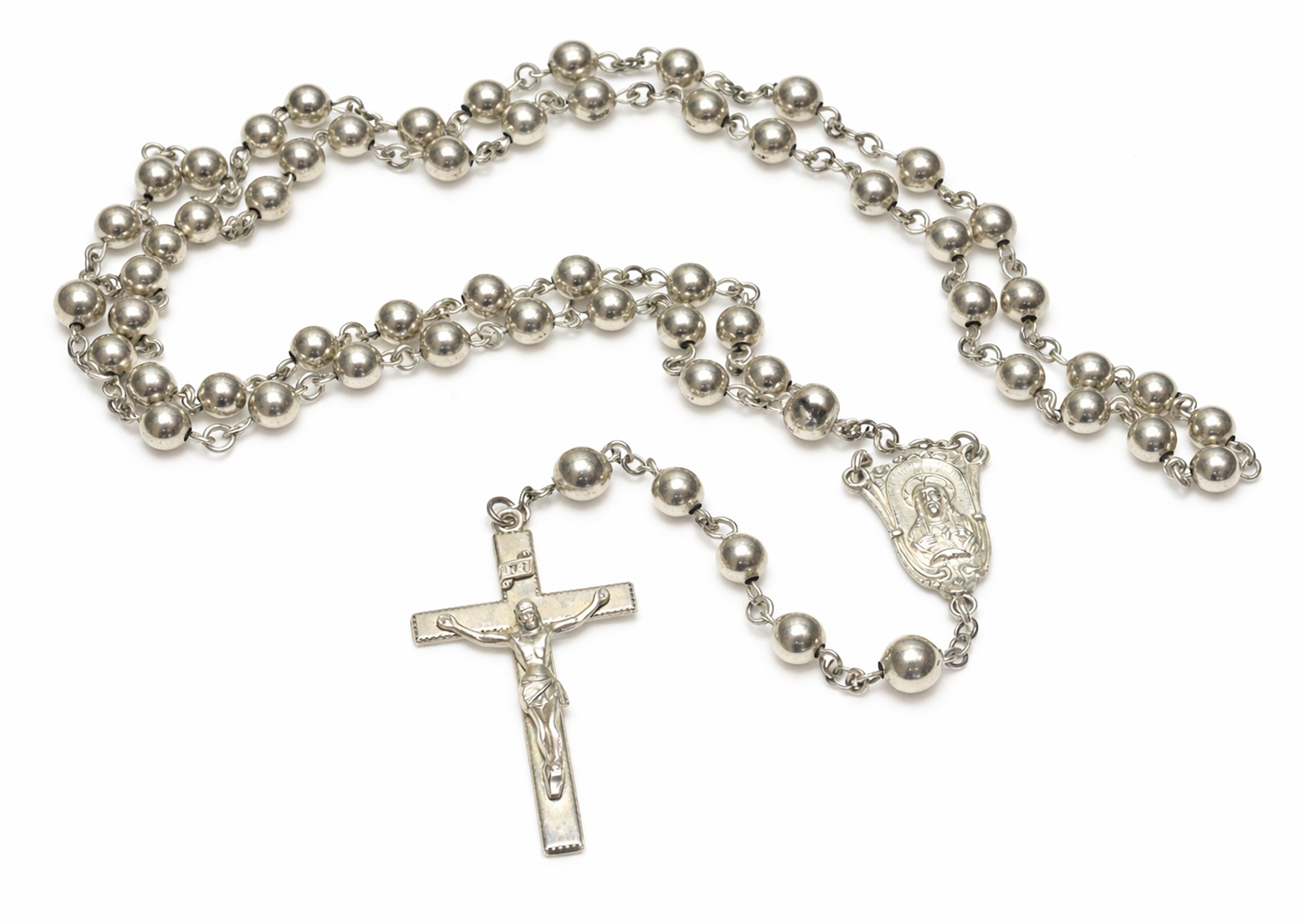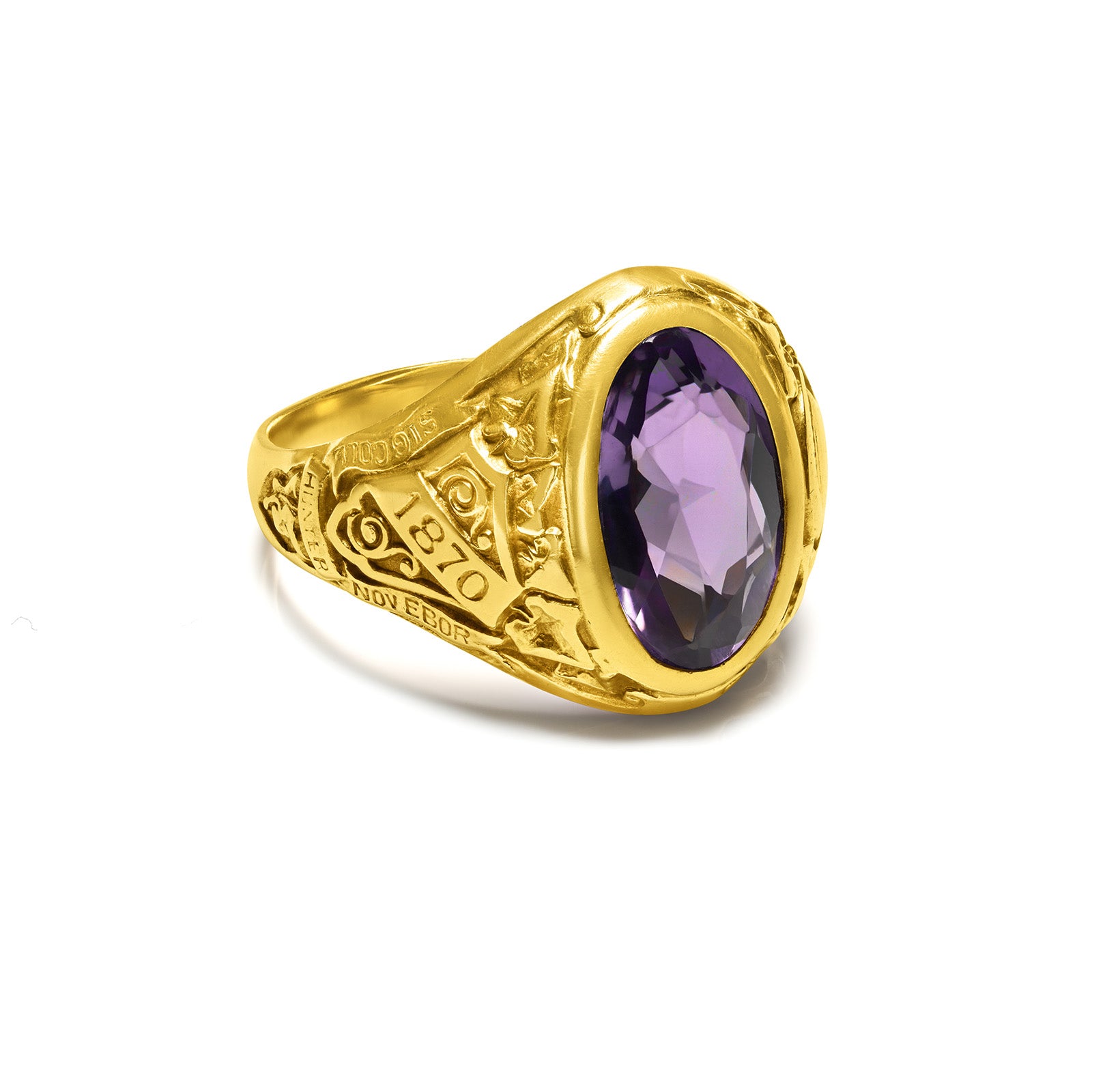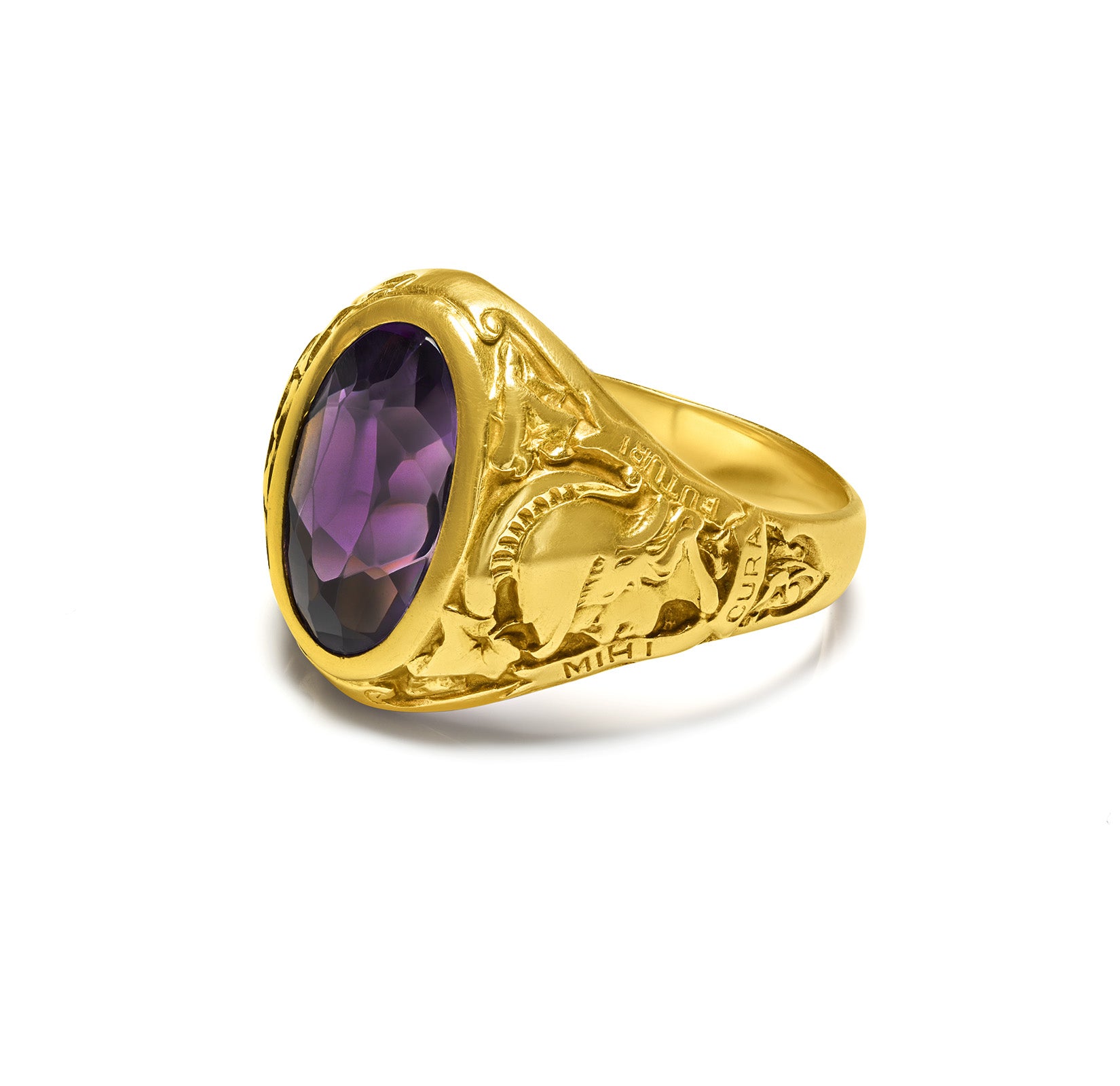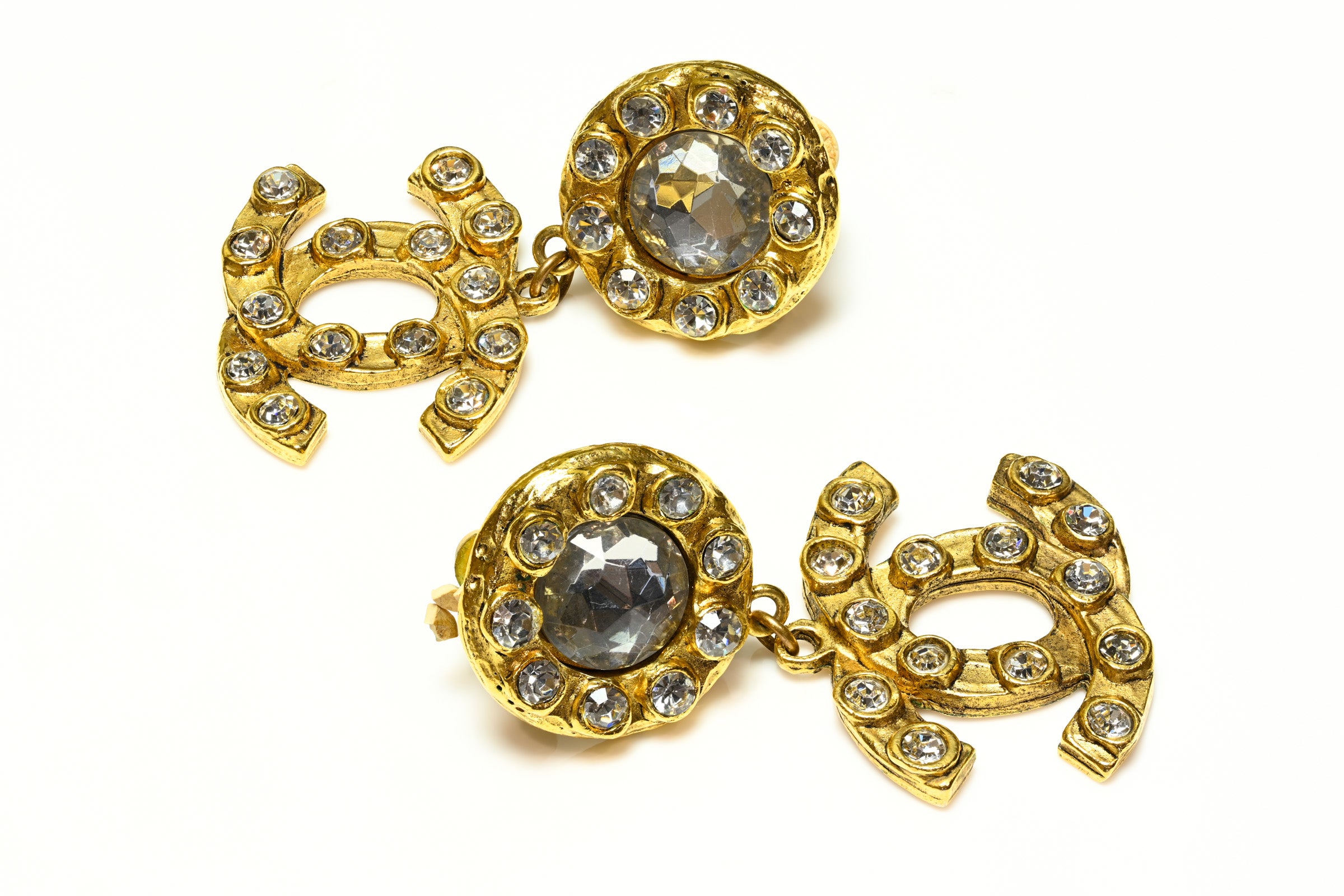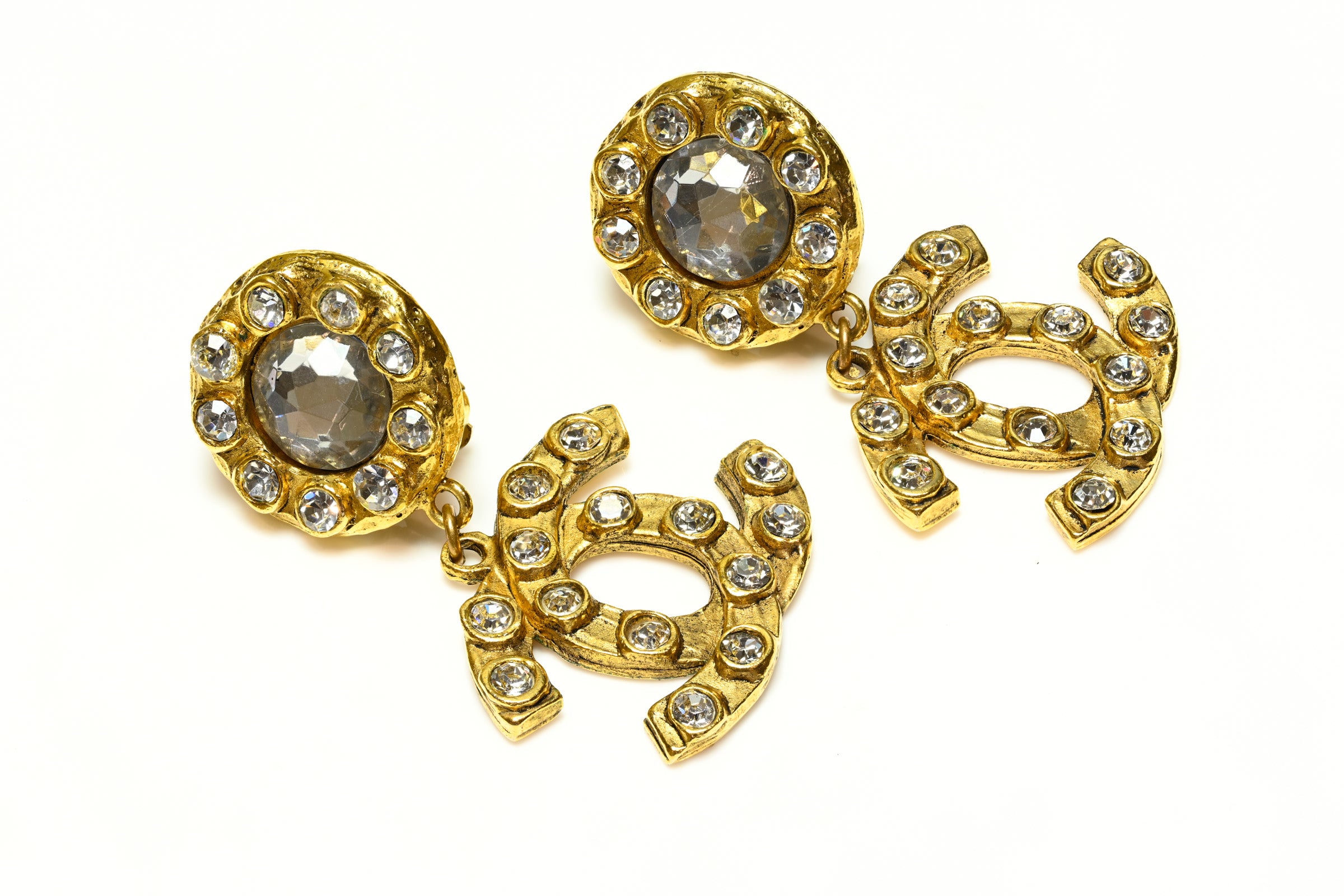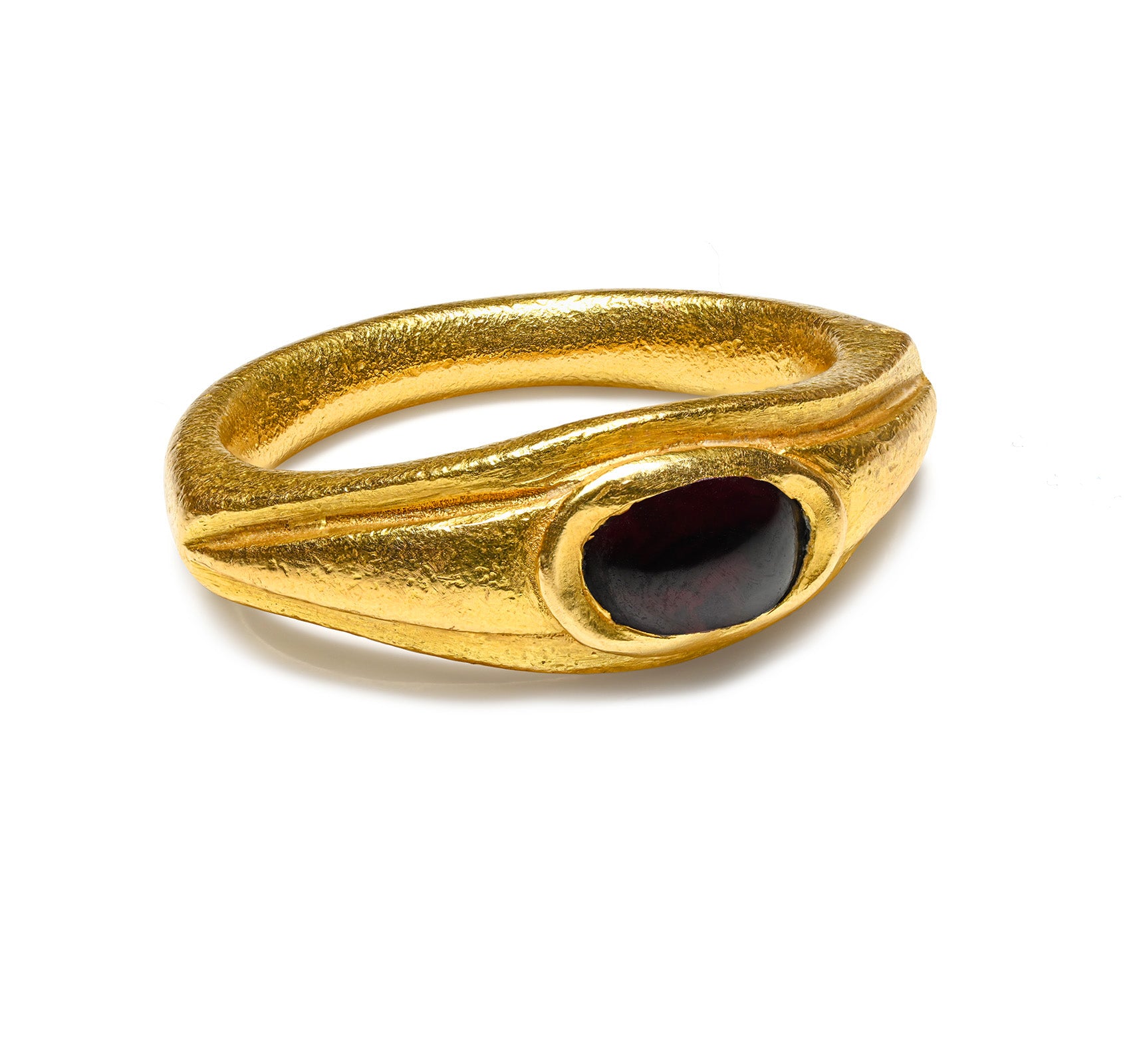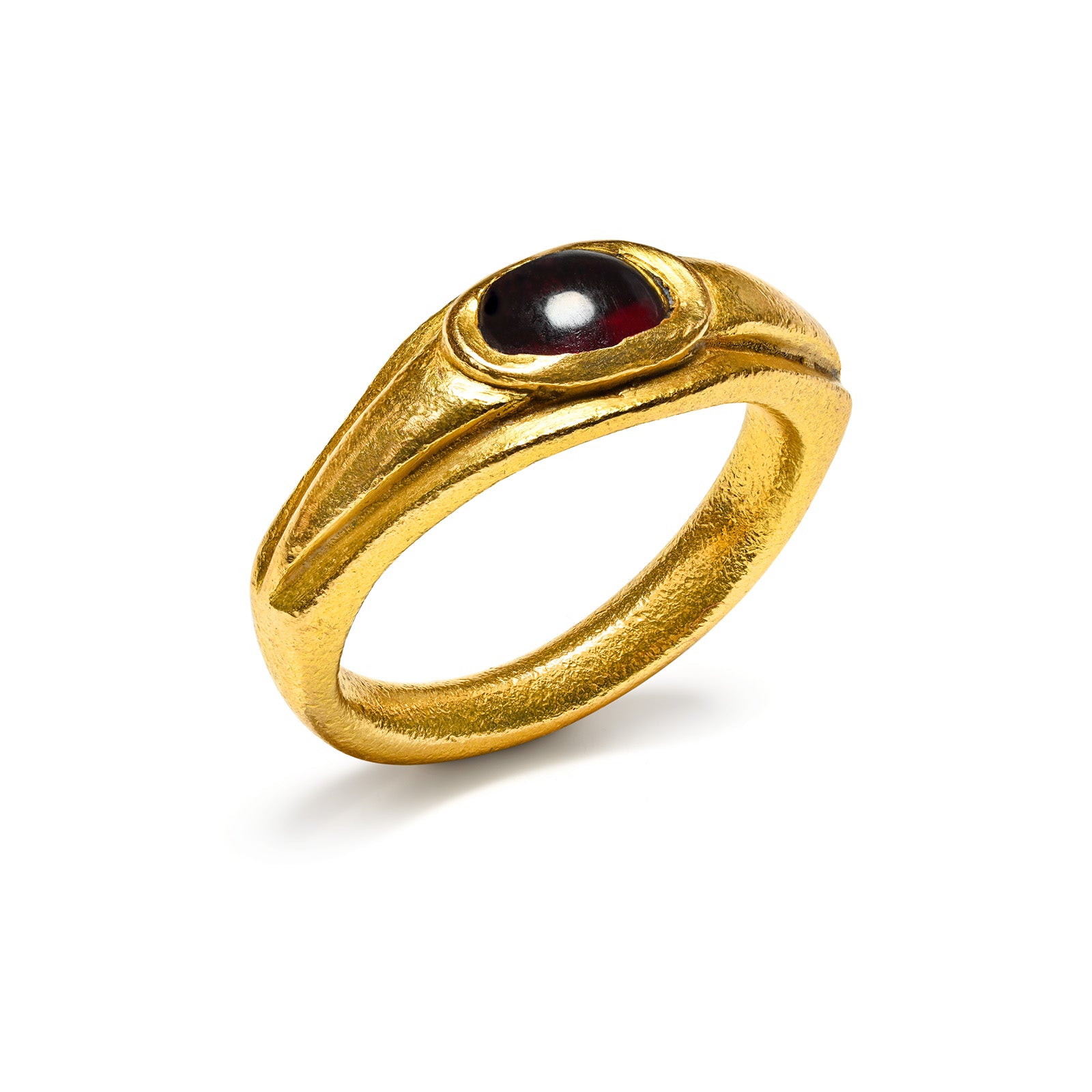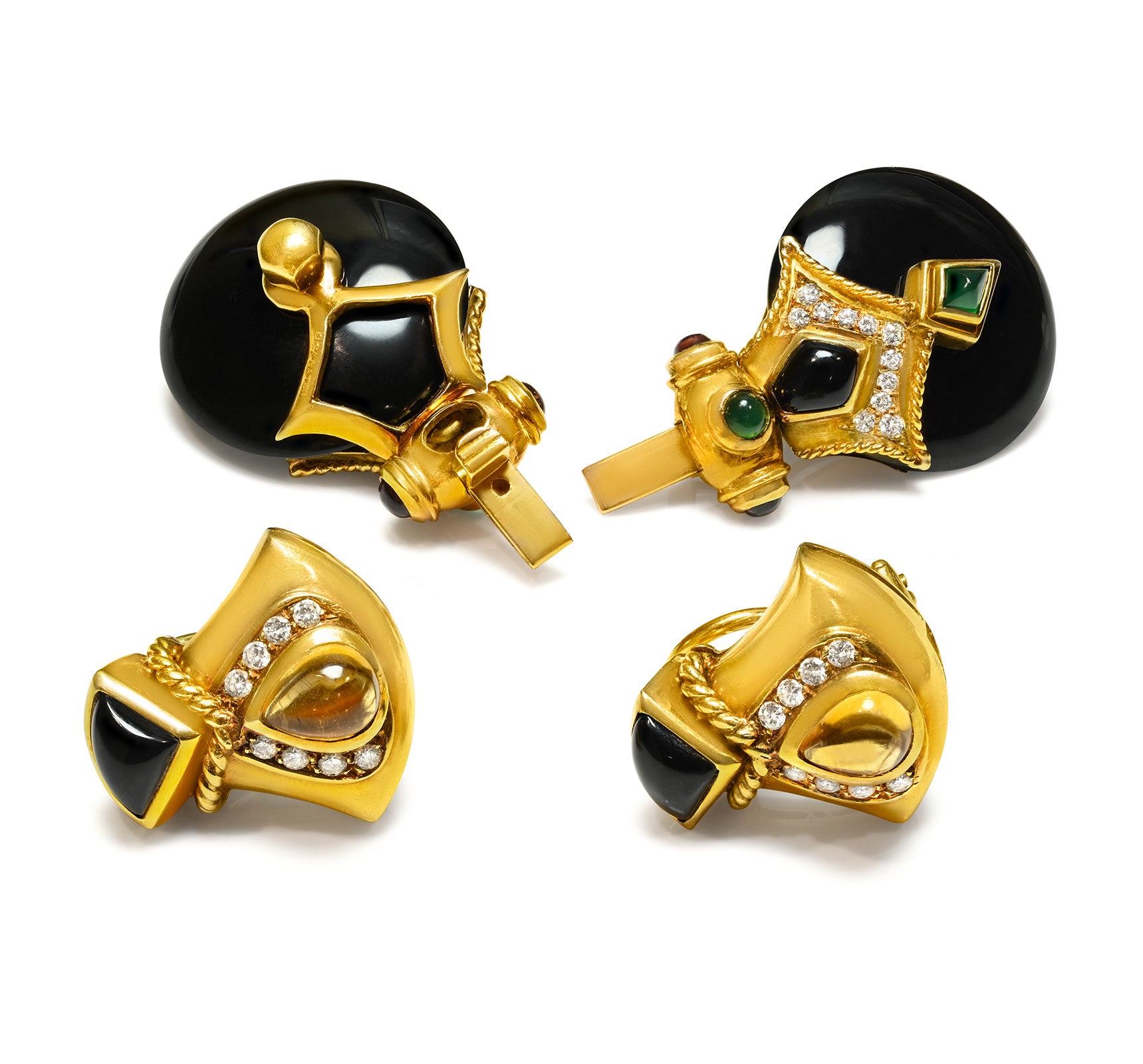Article: Silver Hallmarks: Everything You Need to Know
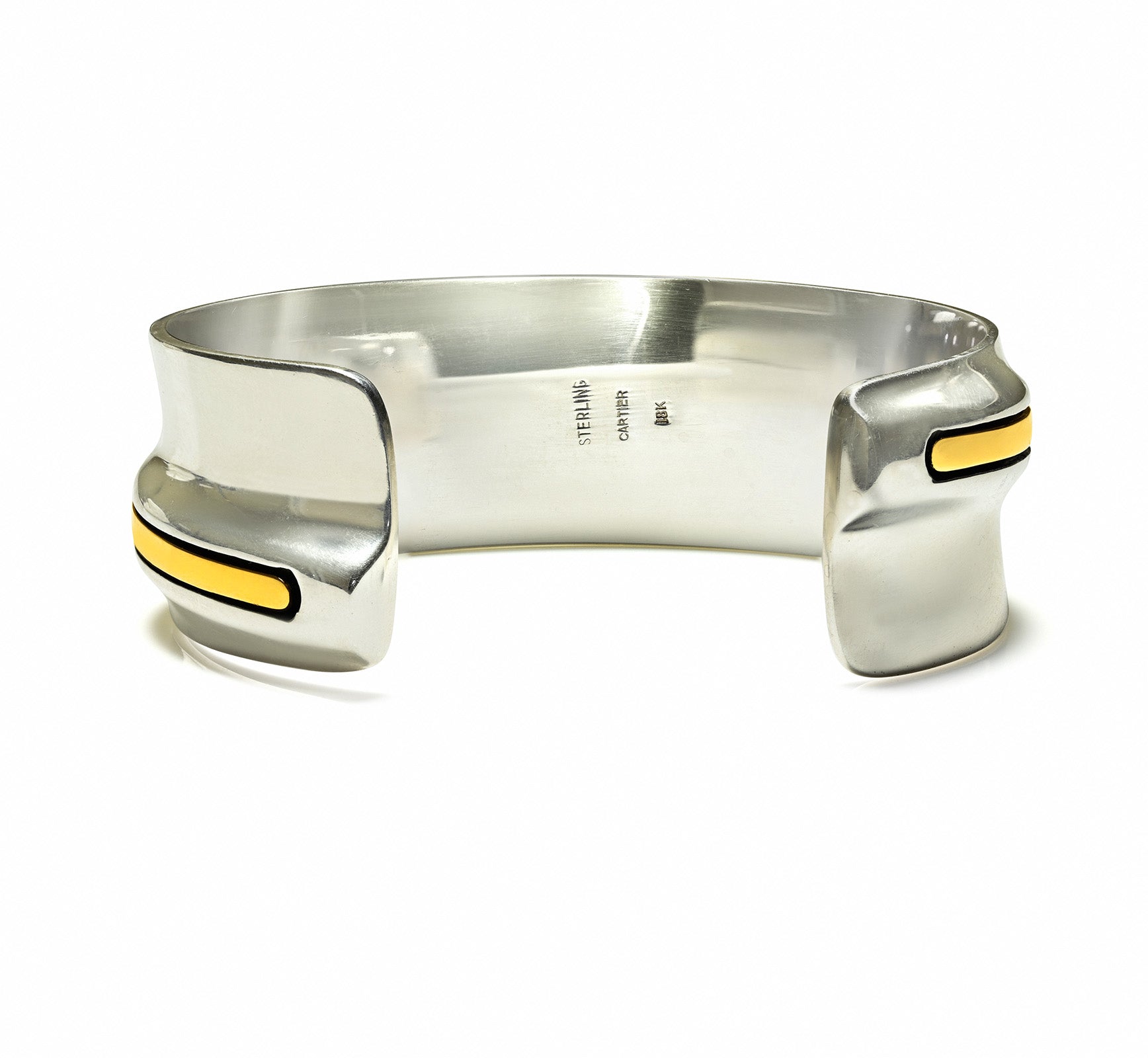
Silver Hallmarks: Everything You Need to Know
Hallmarks stamped on silver objects are much more than decorative engravings. For centuries, they have served as safeguards for buyers, providing official certification that each piece met the legal standards of purity established by local or state authorities.
Today, these marks are invaluable not only to collectors and dealers but also to historians and cultural heritage experts. On antique silver, hallmarks unlock the place and date of manufacture — two crucial details that can transform an anonymous object into a documented piece of history.
One of the most authoritative references on the subject is Guide to Silver Marks of the World by Jan Diviš. His work offers a comprehensive framework for interpreting these marks, useful to both amateur enthusiasts and seasoned specialists.
Whether silver — historically known as "the Queen of Metals" — is encountered out of passion or professional duty, the ability to read hallmarks remains essential.

A Practical Approach to Identifying Marks
The structure of Jan Diviš’s handbook mirrors the real-life process of examining a piece of silver. It begins with the most visible elements: the marks themselves. Each entry is accompanied by essential information — the town and country where it was used, the period during which it was valid, and, whenever possible, the guaranteed level of purity.
What makes this guide particularly practical is its highly systematic classification. Instead of organizing by region or political entity, author Jan Diviš arranges marks according to their pictorial subject, making the book unusually intuitive for quick reference. The sequence runs as follows:
-
Letters (nos. 1–669)
-
Numerals (670–695)
-
Human figures (696–887)
-
Mammals (888–1140)
-
Birds (1141–1302)
-
Other animals (1303–1359)
-
Plants (1360–1482)
-
Heavenly bodies (1483–1517)
-
Architecture (1518–1591)
-
Objects (1592–1816)
-
Emblems (1817–1994)
By starting with what the eye notices first, the system helps the observer move logically from visual recognition to historical identification.

Official Control and State Authority
The most reliable evidence of a silver item’s age and origin comes from marks applied by official control bodies — municipalities, state assay offices, or recognized craft guilds. Jan Diviš devotes special attention to these hallmarks, documenting them as fully as current scholarship allows.
Also included are auxiliary marks that refine provenance, such as duty marks (indicating tax payment) and assignee’s marks (applied by authorized offices or individuals).
For reasons of scope, certain categories are omitted — such as maker’s marks, date letters, and some special purity marks — unless they are essential for identification.
The one notable exception is an elementary selection of U.S. silversmith marks. Unlike most countries, the United States historically lacked government or guild-regulated standards for silver purity, making the maker’s mark the primary, and sometimes only, evidence of origin.
Historical and Geographical Variation
The evolution of hallmarking practices has varied greatly across different countries, and even between regions within the same country.
Jan Diviš’s handbook provides concise historical overviews of hallmark regulations in each nation it covers, helping readers understand the legal and cultural contexts in which these marks emerged.
It is also worth noting that in many official records, the terms “goldsmith” and “silversmith” are not clearly distinguished. As a result, historical references to goldsmiths often apply equally to artisans working in silver — a reminder of the overlapping skills required in the broader precious metals trade.
Chronological Scope
Although modern hallmarks continue to reflect strict regulation and high purity standards, Jan Diviš’s guide places its focus on historical usage. The coverage concludes with the interwar period of the 1930s, keeping the emphasis firmly on antique silver.
This perspective makes the book especially valuable to collectors, curators, and historians, who are most often concerned with objects from earlier centuries.
The Enduring Value of Hallmarks
In essence, silver hallmarks represent far more than legal or fiscal stamps. They are historical fingerprints, revealing the origins, standards, and cultural practices of the societies that produced them.
Guide to Silver Marks of the World distills an immense and complex subject into a resource that is both visually accessible and rigorously organized.
By combining systematic classification with historical insight, the book enables everyone — from curious novices to professional experts — to interpret the enduring language of silver marks.

Hallmarking in Individual States
Australia
Australia does not have an official hallmarking system for precious metals. Historically, most silverware was imported from England and therefore carried British hallmarks.
In 1923, attempts were made to introduce regional Australian marks, but these did not provide official guarantees of purity. Over time, these regional practices disappeared and are no longer in use today.
Austria
Austria developed one of the most detailed hallmarking systems in continental Europe, evolving steadily from the Middle Ages through the modern era:
-
1366 — Princes Albrecht and Leopold issued a decree on the assaying of precious metals, appointing two guild masters, supervised by the master of the mint, to test purity.
-
1659 — Emperor Leopold I granted a patent authorizing work in 14-lot silver.
-
1708 — Emperor Joseph I permitted silver purity levels of 13 and 14 lots, known as the Augsburger und Wiener-Probe.
-
1737 — Emperor Charles VI introduced a 15-lot standard.
-
1774 — Empress Maria Theresa’s patent became the first to specify which hallmarks had to be applied.
-
1784 — State purity control began, initially limited to Vienna.
-
1786 — State control expanded into Galicia (later part of Poland).
-
1806 — A uniform state hallmarking system was established across the Austro-Hungarian Empire, though it excluded Hungary, Slovakia (then under Hungarian rule), and Transylvania.
-
1866 — From August 1, Austria replaced the traditional “lot” system with fineness standards measured in thousandths. Purity marks were standardized at 950, 900, 800, and 750/1000, and these rules were extended to Hungary as well.
-
1872 — Marks were further modified to include a letter identifying the assay office within the fineness mark. These were used in the Austrian Republic until 1921, in Czechoslovakia until 1922, in parts of Poland until 1920, in parts of Yugoslavia until 1919, and in Hungary until 1937.
-
1921 — The new Austrian Republic introduced a legally mandated hallmarking system on October 21, bringing consistency to the post-imperial state.
Belgium
Belgium’s hallmarking history reflects the country’s shifting political landscape:
-
1484 — Maximilian issued a decree regulating the use of date letters in Flanders.
-
1501 — Archduke Philip the Handsome regulated goldsmiths across Holland, Zeeland, Friesland, Antwerp, and nearby towns. Hallmarks combined town emblems (often crowned), date letters, and maker’s marks.
-
1551 — Emperor Charles V established broader regulations in Brussels, covering the Netherlands and surrounding regions.
-
1556 — The Spanish Habsburgs took control but maintained existing hallmarking practices.
-
1612 — Governor Albrecht ordered that a new hallmark be added to the existing town mark.

-
1797 — With the Austrian Netherlands annexed by France, French hallmark regulations came into force.
-
1815–1830 — During the period when Belgium was part of the Kingdom of the Netherlands, the region used distinct hallmarking systems.
-
1831 — After Belgium became an independent kingdom, hallmarking was made obligatory, following the French system.
-
1869 — A new law abolished obligatory state control and permitted any level of purity. Nevertheless, pieces of 800 and 900/1000 fineness could still be assayed and marked. State and assayer marks were retained, but maker’s marks were no longer compulsory. This system remained in place until January 1, 1942.
Bulgaria
Historical information on hallmarking in Bulgaria is scarce, largely due to the long Turkish occupation (1393–1878, and in southern Bulgaria until 1881), during which Ottoman hallmarking systems were likely applied.
-
1910 — Enforcement of the hallmarking law of March 1, 1907, came into effect. This required all items to bear both an official purity stamp and a maker’s mark.
-
Authorized fineness standards: 950, 900, 850, 750, and 500/1000.
-
This relatively late formalization shows how Bulgaria’s hallmarking history was shaped by external rule and later national reforms.
Canada
Canada’s hallmarking practices evolved under successive colonial influences:
-
French Colonial Period (1700–1763) — Silversmiths used marks resembling French ones, typically featuring the maker’s initials inside a shield topped with a crown or fleur-de-lis, sometimes accompanied by a star.
-
Post-1763, under British Rule — Marks appeared in rectangular or semi-circular shields, usually showing only the maker’s monogram. These closely resembled British maker’s marks, occasionally creating confusion.
Regional adaptations also emerged:
-
Halifax used “H,” “HX,” or “XNS.”
-
St. John applied “StU” or “NB.”
In the early 19th century, many Canadian silversmiths imitated English hallmarks, even reproducing official marks like the duty mark.
-
1908 — A national law required silver to meet the sterling standard of 925/1000, remaining valid until 1946.
Former Czechoslovakia
Czechoslovakia’s hallmarking history is intertwined with both Bohemian guild traditions and Austrian imperial law:
-
1324 — First record of a goldsmiths’ brotherhood in Prague.
-
1562 — Ferdinand I approved new guild rules in Prague, requiring all items over half a hřivna (~253 g) to be tested and hallmarked with a town mark and maker’s monogram.
-
1776 — Revised guild regulations elected three hallmarkers. Silver was restricted to 13 lots, though a special mark for lower purity also existed.
-
1785–1786 — Silver of 15 lots (937.5/1000) was permitted, alongside 13-lot silver (812.5/1000). Hallmarking was carried out by elected guild masters.
- From 1806, hallmarking rights in Austrian hereditary lands (including Bohemia and Moravia) were transferred from guilds to the state (see Austria).
-
1921 — Austrian marks of 1872 were abolished. New Czechoslovak hallmarks were introduced, with fineness standards at 950, 900, 800, and 750/1000.
-
1929 — New hallmarks adopted with purities of 959, 925, 900, 835, and 800/1000, valid until 1940.
Note: Until 1918, Slovakia belonged to Hungary under the Austro-Hungarian Empire and followed Hungarian hallmarking laws.
After December 31, 1992, Czechoslovakia split into two independent countries: the Czech Republic and Slovakia.
Denmark
Denmark was an early pioneer in hallmarking, establishing formal regulations in the 15th century:
-
1445 — A royal decree required all gold and silver items to be stamped with both a town hallmark and a maker’s mark, valid throughout the kingdom.
-
1523 — Danish hallmarking regulations extended to Sweden until this year.
-
1685 — King Christian IV issued a new decree for Copenhagen, later adopted by other Danish towns and major Norwegian cities.

Objects over 5 lots in weight were required to be sent to the mint master for assay. Stamping involved four marks:
-
The town mark (e.g., København).
-
The assayer’s mark (e.g., Master C. Ludoff).
-
The month mark (e.g., April).
-
The maker’s mark.
-
1814 — Danish hallmarking regulations ceased to apply in Norway following political separation.
-
1893 — The hallmarking law of April 5, 1888, came into effect. It required:
-
The producer’s mark.
-
A fineness figure with the letter “S.”
-
An official mark with the date.
-
Minimum permissible fineness was set at 826/1000.
-
Egypt
On 1 September 1916, the hallmarking system established by the law of 8 August 1906 officially came into force. From that moment, silver and gold items produced in Egypt were required to carry three distinct marks:
-
Purity and assay office (e.g., Cairo, 800/1000).
-
Government mark.
-
Date letter.
These three marks were stamped on all the major parts of a product, while smaller items carried only the purity mark. This system remained valid until 1946, ensuring both transparency and consumer protection in Egypt’s growing jewelry and silver trade.

England
England developed one of the world’s most influential and enduring hallmarking systems.
-
12th century — Earliest records of English goldsmiths’ guilds.
-
1180 (Henry II) — Establishment of the London guild with the right to use the leopard’s head hallmark.
-
1238 (Henry III) — Introduction of silver purity assays to prevent fraud.
-
1300–1544 (Edward I) — The leopard’s head became the official mark of Sterling silver (11 oz 2 dwt = 925/1000).
-
1336 — Guild regulations mandated three marks: leopard’s head, maker’s mark, and date letter.
-
1423 — “Mark of origin” formally introduced (London retained the leopard’s head).
-
1544 — Introduction of the lion passant, a royal-inspired emblem signifying Sterling quality (925/1000). Until 1821, the lion was shown facing forward; afterward, it was depicted in profile.


Britannia standard (1697–1720)
From 1697 to 1720, the Sterling standard was temporarily replaced with a higher purity requirement of 11 oz 10 dwt (958.3/1000), known as the Britannia Standard. Items bore four marks:
-
Figure of Britannia.
-
Lion’s head erased.
-
Date letter.
-
Maker’s mark.
Because this silver proved too soft for daily use, an Act of 1719 allowed silversmiths to revert to Sterling purity from 1 June 1720. From then on, both standards coexisted.

Later developments
-
1784–1890 — A duty mark featuring the monarch’s head was added to show that tax had been paid. During this period, every piece bore five marks.

-
Post-1890 — The duty mark was abolished, returning to four marks. Depending on purity:
-
Sterling standard: leopard’s head, date letter, lion passant, maker’s mark.
-
Britannia standard: date letter, Britannia, lion’s head erased, maker’s mark.
-


This hallmarking framework established England as a global model of consistency and reliability in silver standards.
Finland
Finland’s hallmarking reflects its shifting political history between Sweden and Russia.
-
14th century — Under Swedish rule; Swedish hallmarking applied.
-
1743 — Partial Russian occupation.
-
1809 — Full Russian control; Swedish system valid until this year.
-
1810 — Finland introduced its own hallmarking system, distinct from Russia:
-
State mark: Finnish crown.
-
Date letters (e.g., A = 1810, A2 = 1864, A3 = 1888, etc.).
-
Purity expressed in lots/zolotniks (13 lot = 78 zolotniks = 812.5/1000).
-
Maker’s mark.
-
-
1920 — New standards introduced: 813 H = 830/1000 and 916 H = 935/1000.
This dual tradition created one of Europe’s most unique hallmarking systems, balancing Scandinavian and Russian influences.
France
France was a hallmarking pioneer, developing one of the most complex and symbolically rich systems in Europe.
-
1275 (Philip the Bold) — Mandated town and maker’s marks.
-
1577 (Henry III) — Attempted introduction of a control hallmark (droit de remède).
-
1579 — New mark for assignees, blocked by Parisian goldsmiths.
-
1672 — Droit de marque introduced; tax payment indicated via a special mark.
-
1681 — Establishment of a four-stage system:
-
Poinçon de maître — maker’s mark.
-
Poinçon de charge — tax mark.
-
Town hallmark (sometimes with a date letter).
-
Poinçon de décharge — tax clearance.
-
-
1791 — Abolition of assignees; charge and décharge marks ended.
-
1797 — State assay system introduced, with:
-
Poinçon de titre (purity).
-
Poinçon de garantie (revenue payment).
-
France’s hallmarking system is regarded as one of the most sophisticated in Europe, influencing numerous neighboring countries.
Germany
Germany’s hallmarking began in the medieval period but became standardized much later.
-
1289 — First record of hallmarking (Erfurt).
-
1548 — Imperial law required all items over 4 lots of 14-lot silver to be assayed and marked with both maker’s mark and a town or noble’s mark.
-
1667 — Reaffirmation of the 1548 regulations.
-
1 January 1888 — Introduction of a uniform German hallmarking system, featuring:
-
Maker’s mark.
-
Purity mark in thousandths.
-
Crescent moon and crown (indicating German origin, self-applied if purity exceeded 800/1000).
-
This late but standardized system created clarity for collectors and jewelers across Germany’s many historic states.
Greece
Regulations governing the purity control of precious metal objects did not exist in Greece until the 1930s, which marked the end of the period covered by this text.
Under a police regulation, goldsmiths were required to register their names and marks with local town authorities and notify the police regarding the purchase and sale of precious metals.
Hungary
Until 1500, hallmarking was not customary in Hungary. Some 14th- and 15th-century objects bear marks, but the system behind them is not yet clarified.
-
1504 — The earliest hallmarking regulation in Hungary was enacted by Vladislav, King of Bohemia, Poland, and Hungary. This signum communae czechae was placed beside the maker’s mark and indicated guild-led purity control.
-
This system remained in use across Hungary and Slovakia (then part of Hungary until 1918) until 1866.
-
1 August 1866 — A new hallmarking system was established for the entire Austro-Hungarian Empire. Hungarian stamps continued to be used locally until 1937.
Ireland
Ireland’s hallmarking system closely followed that of England but retained distinctive features:
-
1495 — English hallmarking regulations of 1423 adopted.
-
1498 — Goldsmiths’ guild established in Dublin.
-
1557 — Manufacture of precious metals liberalized in Dublin.
-
1605 — Purity testing reinstated due to abuses of liberalization.
-
1637 — Charles I approved statutes for the Dublin goldsmiths’ guild, requiring English purity standards.
-
1638 — Date letters introduced.
-
1730 — A duty tax was introduced (25 March), verified by stamping objects with Hibernia marks.
-
1807 — After the Act of Union (1800), Ireland formally adopted the English hallmarking system.
-
1923 — After independence, new marks came into use (4 April), consisting of maker’s mark, town mark, purity mark, and date letter.
Italy
Italy’s hallmarking history is marked by regional fragmentation until modern times:
-
Pre-1797 — Town guilds across various states stamped their own marks.
-
1797 — The Republic of Venice ended; its hallmarking system had covered Venice, Verona, Brescia, Bergamo, Friuli, Istria, and Dalmatia.
-
1810 — Napoleon introduced a French-style hallmarking system in the Kingdom of Italy, with guarantee offices in Milan, Venice, Ancona, Verona, and Brescia.
-
1815–1859 (1866) — The French system continued under Austrian rule in Lombardy-Venice.
-
1818–1872 — Modena and Parma developed their own hallmarking systems.
-
2 May 1872 — A law introduced uniform hallmarking across Italy. Purities of 950, 900, and 800/1000 were established, but hallmarking was not compulsory.
-
1935 — New marks introduced with purities of 925 and 800/1000, still in use today.
Japan
Japan introduced hallmarking relatively late:
-
1928 — Hallmarking of precious metals established by Ministerial Decree No. 12 (29 June).
-
1954 — Regulations revised on 18 May.
-
Permitted purities expressed in thousandths: 1000, 950, 925, 900, 800/1000.
-
Required marks: (1) maker’s mark, (2) control mark, (3) fineness hallmark.

Netherlands
Before the wars of liberation against Spain, Spanish provincial regulations were effective in the present-day Netherlands.
-
1501 — Archduke Philip issued goldsmith regulations for Holland, Seeland, and Friesland.
-
1661 — The Placaat en Ordonnantie introduced sworn assayers who added a town mark (merk van Stads Wapen) and a crowned lion hallmark (Provinciale gekroonde Leeuw), guaranteeing higher precious metal content (875/1000). Large items bore four marks: town mark (e.g., Amsterdam), date letter, crowned lion, and maker’s mark. Smaller pieces required only the maker’s mark and the lion hallmark.

-
1806–1810 — The Kingdom of the Netherlands introduced new hallmarks for purities 934 and 833/1000, with updated date letters.
-
1810–1814 — The Netherlands became part of France, and the French hallmarking system was applied. Items were marked with maker’s mark, purity mark, and bureau de garantie mark.
-
1814 — A royal decree established new marks for the Netherlands only; these remained valid until 1953.
Norway
-
1314 — King Haakon V mandated that silver be stamped with a purity mark.
-
1380–1814 — Norway was united with Denmark, and Danish regulations applied.
-
1568 — A goldsmiths’ guild was founded in Bergen.
-
1640–1740 — Guilds abolished; goldsmiths answered directly to the king.
-
1740–1840 — Guilds reinstated with limited power. Monthly hallmarks introduced in 1740, first as fractions; from 1766–1820, zodiac symbols were used.
-
Example hallmark set included: town mark (Bergen), maker’s mark (P. A. Aasmundsen), year mark (1812), assayer’s mark (M. Pettersen), and month mark.

-
1859 — Guilds abolished again.
-
6 June 1891 — Law introduced a modern hallmarking system requiring: purity in thousandths, an “S” next to the purity mark, and the maker’s name. Minimum permitted purity: 830/1000. The official assay hallmark became the crowned Norwegian lion. Assaying is optional.
Poland
-
1548 — Town marks reportedly introduced by Sigismund August, though no uniform hallmarking system existed.
-
1772 — First Partition of Poland: Prussia annexed Polish Pomerania and western areas, Austria gained Galicia (without Cracow), and Russia acquired lands near the Upper Dvina and Dnieper.
-
1793 — Second Partition: Prussia acquired Gdansk, Torun, Great Poland, Kujawy, and Mazowsze; Russia took additional eastern territories.
-
1795 — Third Partition: Russia, Prussia, and Austria divided the remaining Polish lands, ending independence.
-
1815–1863 — The Russian-ruled Polish Kingdom was established; Galicia remained Austrian; Cracow was a free republic until annexed by Austria in 1846.
-
1863 — After the Warsaw Rising, Poland lost its autonomy and became the Russian Vistula Territory.
-
9 August 1920 — Following re-establishment of Poland, new hallmarks were introduced with permitted purities of 940, 875, and 800/1000; valid until 1947.
Portugal
-
Pre-1881 — Towns applied their own marks alongside makers’ marks. Town marks guaranteed a purity of 958/1000.
-
1881 — A provisional state hallmarking system introduced.
-
1 June 1886 — Obligatory purity control enacted with permitted purities of 916 and 833/1000.
-
1 January 1938 — New marks introduced, still in use today. The hallmarking system has remained unchanged since.
Romania
-
Pre-1906 — No hallmarking system existed. Hungarian regulations applied in Transylvania and Banat until 1919.
-
28 February 1906 — A modern hallmarking law introduced purity marks (950, 800, 750/1000) and maker’s marks.
-
1919 and 1937 — New marks introduced, retaining the same purity standards.
Russia
-
1613 — First recorded mention of hallmarking silver.
-
1649 — Hallmarking of low-purity silver banned.
-
1700 — Peter the Great decreed hallmarking for Moscow and provinces; maker’s marks (imenniki) began to appear.
-
1725 — Records begin for the Moscow assay office.
-
1733 — Decree regulated silver-copper alloy proportions: 72 zolotniks silver and 24 zolotniks copper.
-
1735 — Assay office established in St. Petersburg.
-
18th–19th centuries — In Moscow, hallmarking followed three steps:
-
Maker’s mark (imennik).
-
Guild quality mark.
-
Assay office mark and fineness mark.
In other towns: town mark (sometimes dated), maker’s mark (monogram, rectangular shield), and purity mark (zolotniks, rectangular shield).
-
-
1891 — Uniform national marks introduced: hallmark featured a woman’s head profile and the assay district administrator’s monogram.
-
1927 — New hallmarking law adopted, introducing purity marks expressed in thousandths.
Scotland
-
1457 — James III set silver plate purity at 916/1000.
-
1483 — James III ordered the use of makers’ marks.
-
1489 — Adopted the purity standard used in Bruges.
-
1525 — First goldsmiths’ guild established in Edinburgh.
-
1555 — Renewal of original Scottish purity standard of 11 oz (= 916.6/1000).
-
1681 — Introduction of date letters (A–Z, excluding J).
-
1707 — Union of Scotland with England.
Spain
-
16th century — Royal decree permitted silver of 11 dineros 4 granos (= 930/1000). Every goldsmith required a personal mark; a marcador stamped the piece after approval.
-
1785 — Dates began to be included alongside some town marks.
-
1881 — Silver production liberalized, often resulting in lower purity. Sellers or buyers could request official assay (Fiel contraste). Purity grades:
-
Primera ley — ≥ 11 dineros (= 916/1000)
-
Segunda ley — ≥ 9 dineros (= 750/1000)
-
-
1934 — New marking system: purity expressed in thousandths; two marks required — producer’s mark and purity mark.
Sweden
-
1485 — Imperial council letter mentions stamping items with maker’s marks.
-
1529 — Maker’s mark mentioned in Gustav Vasa’s goldsmiths’ order.
-
16th century — Maker’s mark began appearing alongside town mark.
-
1689 — Stockholm assayer A. Grill introduced date letters.
-
1752 — State assumed responsibility for purity control.
-
1758 — Chamber assembly introduced mandatory date letters nationwide (including Finland).
-
Example from the period:
-
Town mark (e.g., Alingsås)
-
Maker’s mark (Per Svanander)
-
Date letter (1782)
-
State control mark
-
-

-
1860 — Town emblems replaced by special identifying letters (first letter of town name).
Switzerland
-
1544 — Zürich attempted to enforce its purity regulations across all cantons.
-
1547 — Zürich’s proposal adopted in Lucerne, and probably also in Uri, Basel, and Solothurn.
-
1848 — Federal decree on uniform purity standards across Switzerland, although cantonal marks persisted.
-
1880 — Federal law on silver purity control established permissible purities of 935, 925, 900, 875, and 800/1000.
-
1882 — Uniform Swiss marks enacted under the 1880 law.
-
1893 — Modified marks adopted, valid until 1934; letter in shield denoted control office location.
Tunisia
-
1856–1905 — Items bore:
-
“Sekka” purity mark (~900/1000)
-
“Sahha” guarantee mark
-
“Khales” date mark
-
-
1878–1905 — Introduction of assayer’s mark (a star), applied when item was offered for sale.
-
1905 — New marks adopted on 25 July; permitted purities 900 and 800/1000; valid until 1942.
Turkey
-
Pre-1844 — Purity standard 800/1000.
-
1844 — New official purity 900/1000 introduced. Assay was not obligatory and often imprecise.
-
1923 — New marks introduced; standards remained 900 and 800/1000.
-
1928, 1938, 1942 — Marks altered, but purity levels unchanged.
United States of America
-
Colonial, federal, and state governments never regulated silversmiths or mandated purity standards or date letters.
-
Cities like New York and Boston had guilds or societies setting their own standards; Baltimore had an assay office supervised by elected silversmiths.
-
Historical American silver usually bore only the maker’s mark — either a monogram or full name, sometimes with location or purity numerals.
-
Without date letters, dating can only be done via stylistic analysis or decorative features.
-
Modern standards:
-
Maker’s mark and purity number mandatory, with tolerance ±0.004/1000.
-
“STERLING” or “STERLING SILVER” indicates 925/1000 purity.
-
Identification relies heavily on confirming the maker’s mark, since forged foreign pieces often had official marks removed and false maker’s marks left intact.
-
Yugoslavia
-
1834 — Mandatory hallmarking introduced in the Kingdom of Serbia for precious metal items.
-
1882 — Law of 17 July established new hallmarking system in Serbia with regional control offices. Allowed purities: 800 and 750/1000.
-
1919 — After the formation of Yugoslavia, new hallmarks and purities (900, 800, and 750/1000) applied nationwide.
-
1933 — New hallmarks issued; new standard purities: 950, 900, and 800/1000.
Photos credit: Guide to Silver Marks of the World by Jan Diviš
